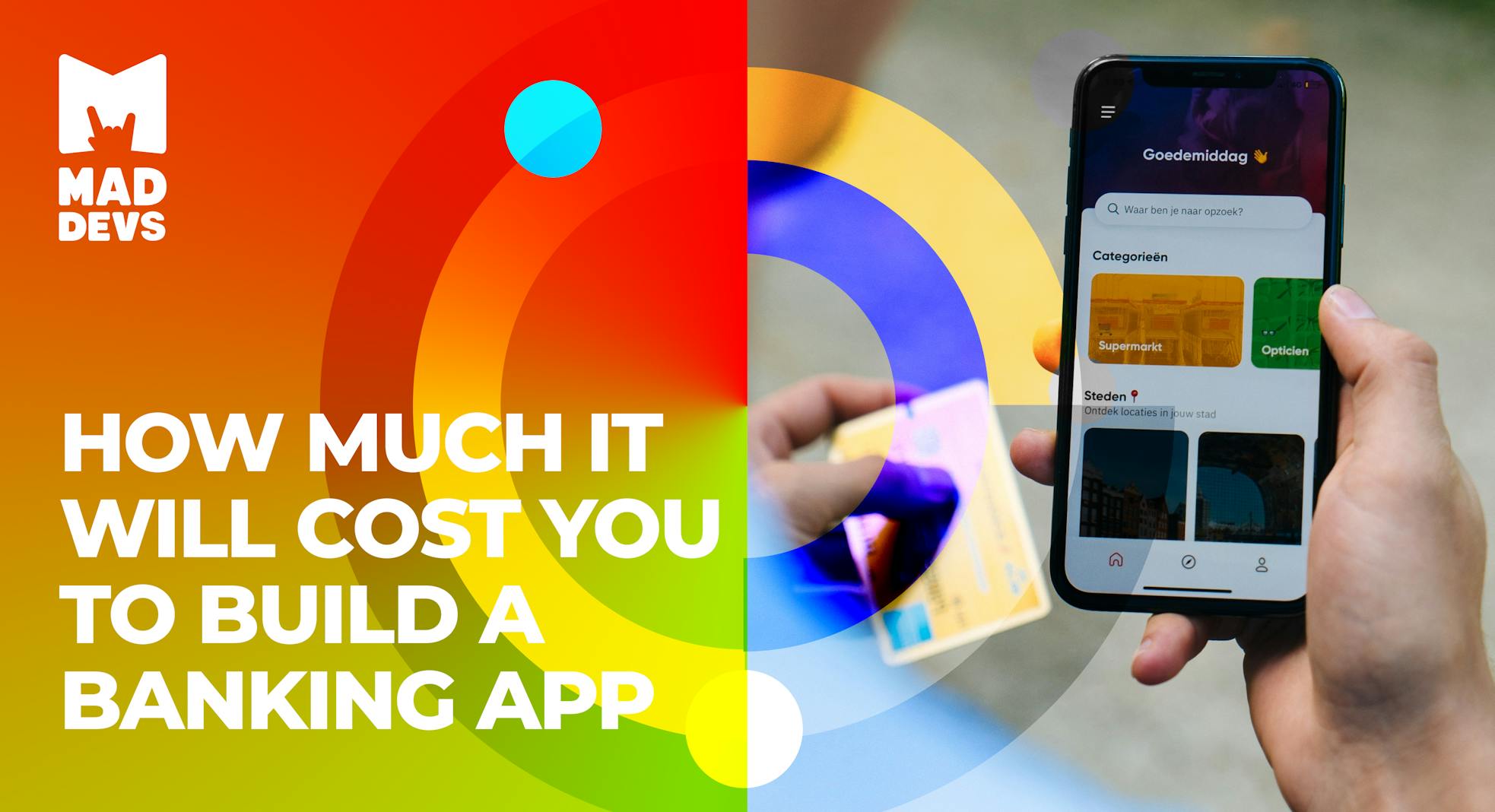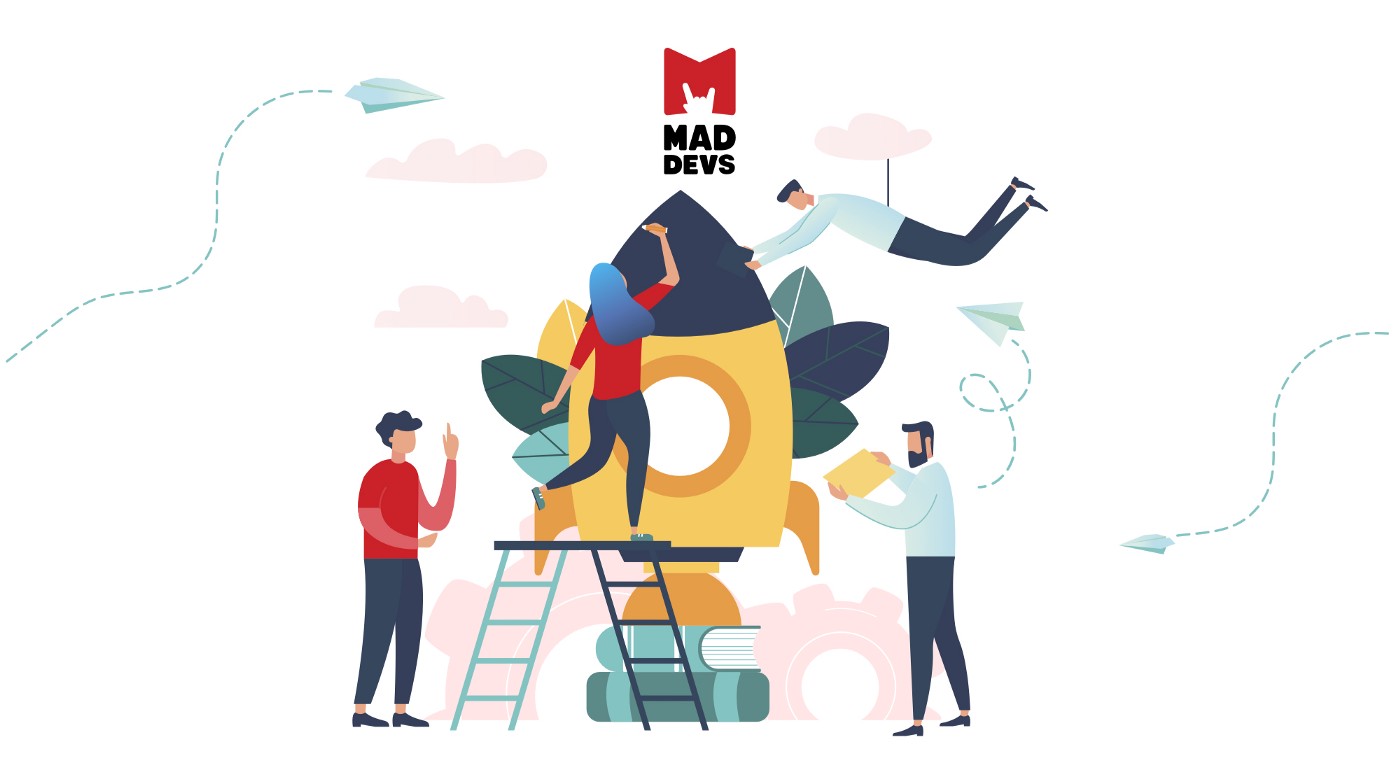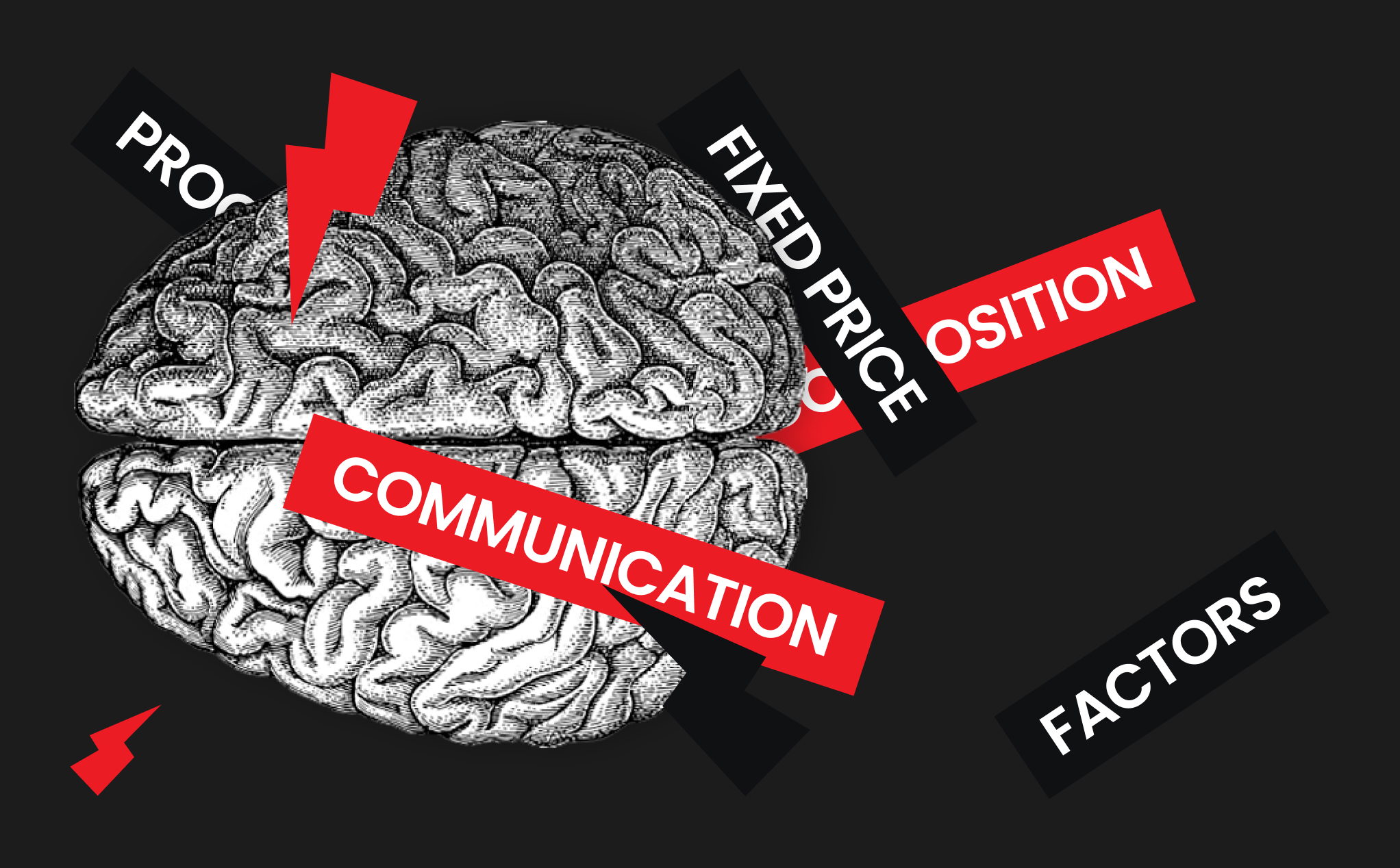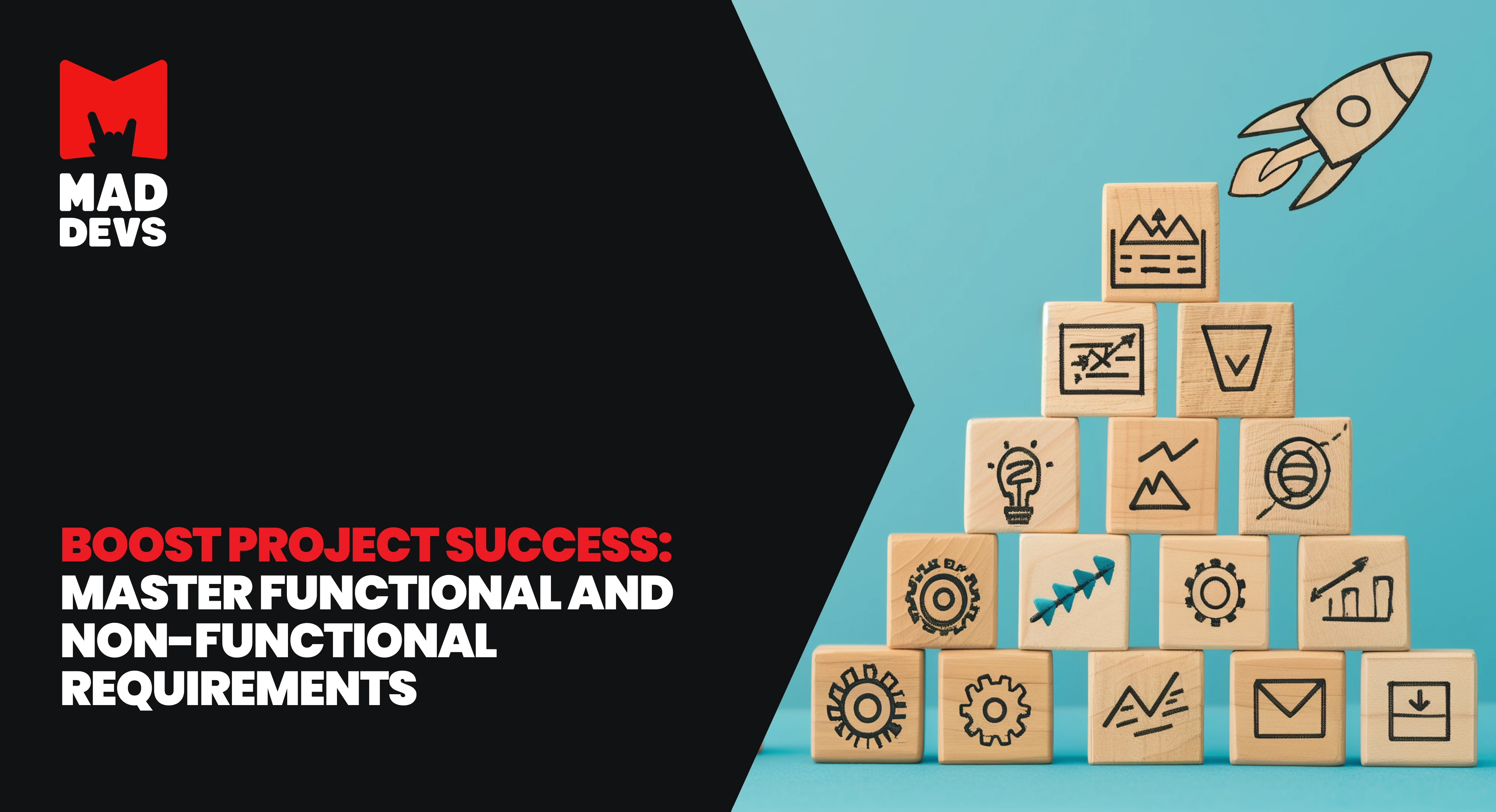Long gone are the days when banking operations, such as opening a bank account or paying bills, were complicated tasks that took up time and caused shivering. Online banking has made life much easier for both parties: banks and their customers. Nowadays, you don't need to go to a bank to send money to your family—whether they live in a nearby city or on a different continent. Everything is on your smartphone.
There are a variety of online banking services and mobile apps that allow you to carry out all the necessary operations with minimum time and effort. Currently, every bank must go online otherwise there is a high probability of falling behind the competition and losing customers.
Creating a banking app might seem like quite a challenge, but this is where banking as a service (BaaS) may come to the rescue. In this post, you'll learn about the opportunities provided by BaaS and gain insight into building a banking app, that is, what it takes and how much it can cost.
A few words about BaaS
BaaS is about digitising banking to a great extent. This is a service model that connects licensed banks with end-users through third party providers.
Very often, e-commerce and fintech companies, especially if they are startups, cannot afford their own banking license or infrastructure, but without them, their business is put at risk. Instead of getting a license and building or buying their own infrastructure, a business can utilize the existing banking solution for a certain fee. BaaS yield benefits for all parties involved.
Why use BaaS
BaaS may come in useful to either financial or non-financial businesses and institutions. The service can offer advantages to:
- Banks: Developing and supporting infrastructure is costly, but sharing it with someone else could cover the expenses and bring extra funds. Thus, the money received as a payment for leasing infrastructure can be invested in new projects. By launching its BaaS platform, a bank gets an opportunity to grow its business, acquire new partners and clients, and retain existing customers.
- Fintech: As mentioned earlier, when starting their business, fintech companies lack resources for creating infrastructure and establishing their own processes. A BaaS may serve as a springboard for them. By utilising a BaaS platform of a licensed bank, they remove the necessity to develop their own financial system and significantly reduce time to market. Scaling a fintech business is also much faster with BaaS.
- Non-financial business: BaaS is a problem-solving tool for businesses that have nothing to do with banking and finance. By adopting a BaaS platform, a business gets access to multiple banking services that can be smoothly integrated into its own services and products. Thus, a non-financial company can issue cards, offer loans, and process payments.
- End-users: Without doubt, consumers benefit from BaaS, too. Financial services become more available with BaaS, which opens up more opportunities for end-users. For example, fintech solutions as BNPL platforms that allows consumers to purchase items online and right now without having to pay instantly. BaaS fosters competition among service providers, which battle for customer attention by constantly improving user experience. As a consumer, you just make choices based on your preferences, such as simplicity, speed, or any other.
BaaS: The rules of the game
The BaaS market was worth $356.26 billion in 2020 and is expected to reach $2,299.26 billion by 2028. In a nutshell, putting BaaS into practice looks as follows:
Step 1: A bank or another financial institution develops a BaaS platform or employs a ready-made solution offered by a BaaS provider.
Step 2: The bank grants access to its data, infrastructure, and other resources through application programming interfaces (APIs).
Step 3: The bank's partner starts using all the available resources to build their own products or render services with the integrated banking functionality.
Building banking apps with BaaS
A banking application is a must in everyday life. We send and receive money, schedule payments, pay bills, and handle other operations. A banking app helps you to manage your finances in a painless and effective manner.
BaaS facilitates the development of various banking solutions, including white-label products—the ones that have no brands and can be easily customised according to the customer's needs. Banking apps belong to such products.
A white-label BaaS provider can tap into the infrastructure and functionality of a licensed bank and develop customisable mobile and web apps with the core functionality.
Main features of a banking app
According to Insider's study, 89% of all respondents and 97% of millennial respondents reported using mobile banking. Banking app users highly appreciate the convenience and ease of use provided by these mobile solutions. The applications may differ in the number and variety of features, however, there are core functions found in most banking apps.
Authentication
Either physically or online, banks should make security the cornerstone of their business. Ensuring secure access to the app is a mandatory feature that can be implemented in different ways. Two-factor authentication (2FA) is a better option for verifying a user's identity and protecting from unauthorized access. This adds an extra layer of security and may comprise a fingerprint, facial scan, or security token in addition to a password.
Account management
It's highly likely that balance is the first thing you want to check as you access a banking app. Knowing your balance is essential for performing operations with the account. In addition to checking the account balance, banking app users can see the history of transactions. This feature allows users to monitor expenses and thus manage their budget.
Card management
Managing cards, either credit or debit, is also on the list of must-have banking app features. The app enables a user to carry out multiple operations with bank cards within minutes or even seconds. Thus, you can promptly open and block cards, replace old and add new ones, link a card to a certain account, set and change a card PIN.
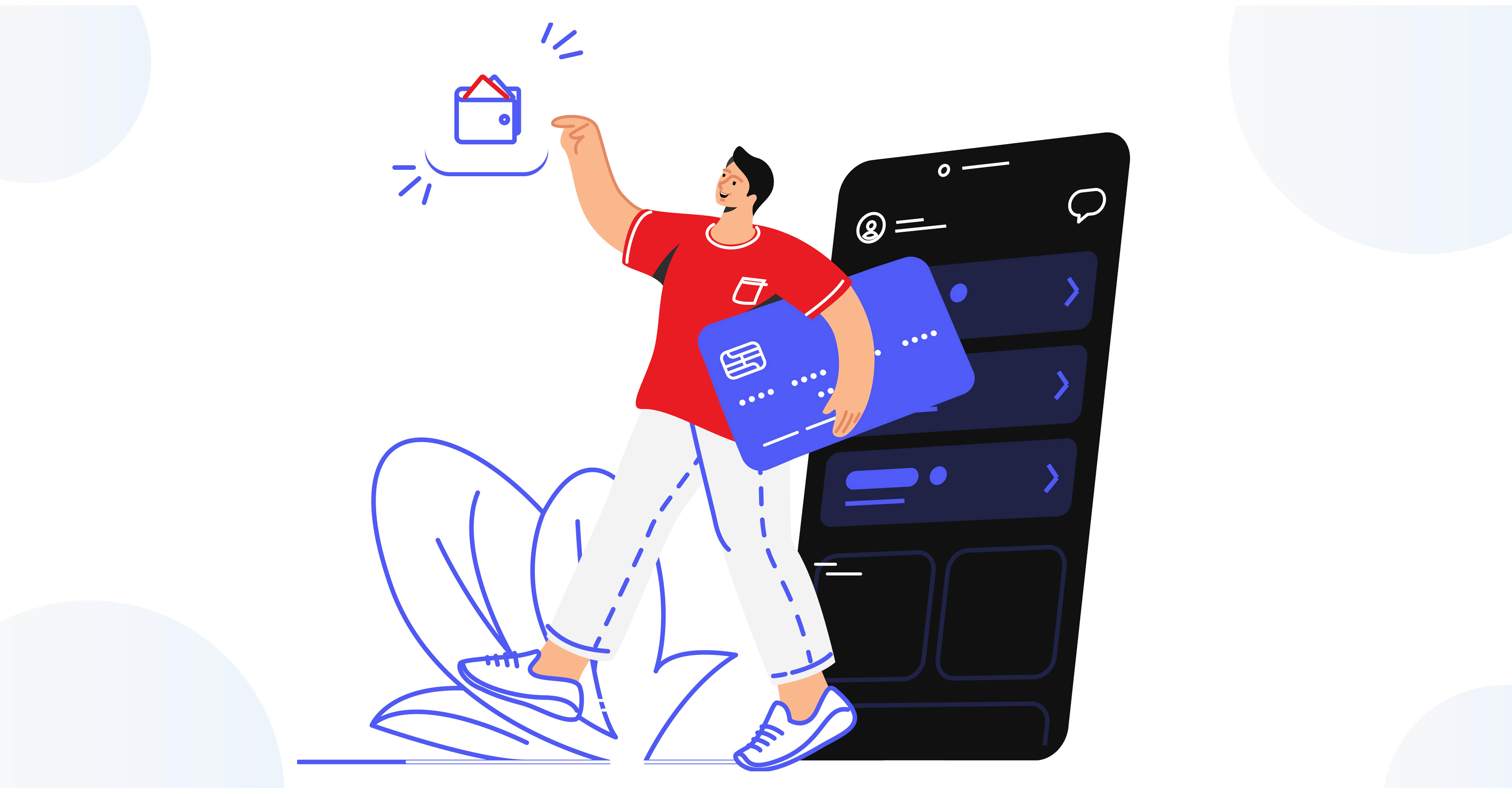
Payments & transactions
Sending and receiving money via a mobile app is what makes our daily lives far easier. This feature opens the door to an array of activities. Thus, you can transfer money quickly and securely between your own accounts or send it to other people's accounts regardless of the country and bank they are at. You can deposit your salary, make automatic bill and loan payments, shop online, and do many other things with only a smartphone in your hand.
What else a banking app can do
Of course, the above list of banking app features is not complete. Such apps can have a much broader functionality, meeting a diversity of end-user needs. When interacting with a banking app, a user can:
✔ Get support and consultations from the bank's customer support, including a chatbot
✔ Receive notifications and alerts to be informed about the latest updates and bank offers or reminded about regular payments
✔ Navigate while looking for a bank office or an ATM
✔ Plan budget with tracking tools that may show daily, weekly, and monthly expenses
✔ Use QR codes to pay quickly for products and services using a smartphone
✔ Get cashback as a reward for purchases made with a bank card
A brief roadmap to building a banking app
Once you set your mind to creating a banking app, you need to have a clear understanding of what is required and what to begin with. Having access to a bank's infrastructure is great, but how to build an app on top of it? Let's figure it out in a step-by-step manner.
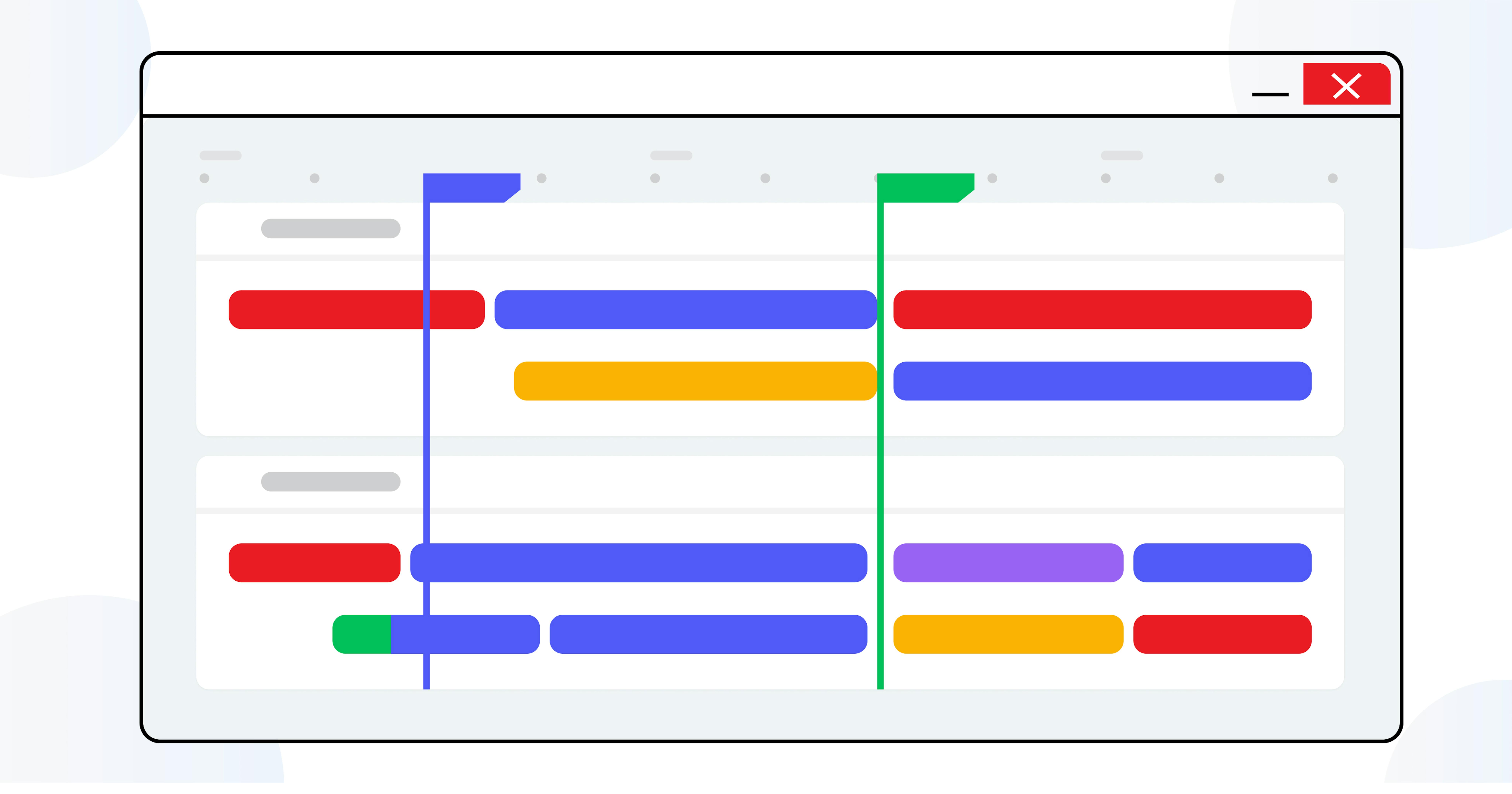
Define requirements first
It does make sense to start with a list of requirements and features that you want to have in your product. By searching the market, studying competitors, and understanding user wants and needs, you'll get an idea of what an app should look like and what functionality it should have. Finally, you need to come up with a product goal and requirements, including:
1. Non-functional requirements, that is, among other aspects, the app should:
- Support certain languages, operating systems, browsers, devices, etc.
- Be integrated with a certain BaaS platform
- Comply with all relevant regulations and standards prescribed by the national and local authorities (those may relate to the industry, security, and other areas, for example, CVVA and OWASP MASVS)
2. Functional requirements that may comprise the following:
- Registration and authentication of an app user (secure access, KYC compliance, etc.)
- Account and card management
- Payments and transactions
- Customer support
- Push notifications
3. UX/UI design requirements, which should embrace all the good things that make up an engaging and user-friendly product.
Choose the team
Hiring an outsourcing team is a way out if you don't have mobile development expertise in-house. Normally, creating a banking app is a time-taking process that starts with building a prototype or MVP, which is further transformed into a mature product. So it's crucial to choose the right partner with whom you can establish a long-term relationship and travel the long path of app development. Moreover, after the development, the app should be supported and maintained in the future.
It's necessary to make sure your potential partner is well equipped to turn your product vision into reality. The selection criteria encompass:
✔ Relevant expertise
✔ Experience with similar projects and industries (banking, fintech, etc.)
✔ Required resources available
Having all of the above, an app development vendor can work out a clear implementation strategy and provide a reasonable estimate of the project, considering all risks and assumptions.
Hiring true professionals means getting your app developed faster and to the highest standard. Building a banking app on top of a BaaS platform may take experts in various fields, such as:
- Mobile app developers (iOS/Android)
- UX/UI designers
- Project managers
- QA engineers
- DevOps engineers

The right approach is key to success
Developing and managing a project in a seamless way saves time and money. So it's important to map out a development strategy and see what tasks should be taken up first and which of them can be done in parallel.
Starting with in-depth research is imperative to make a success of the project deliverables. So before getting down straight to app development, it is vital to gather requirements, study the applicable regulations, and learn all the ins and outs of the project to identify and mitigate potential risks and problems.
To achieve targeted results, a vendor should be deeply involved in the project and stay in close cooperation with the customer at every development stage. Developers must give prompt feedback and report regularly on the project's progress.
Agility is a must-have ability in today's world with its ever-changing social and business environments affected by global upheavals (the COVID-19 pandemic is a good case in point). That is applicable to app development, too. Here are the key points of the agile approach that can contribute a lot to the project's success:
✔ Proactivity – anticipate and solve potentials problems before they occur
✔ Adaptability – react rapidly to any changes and make required adjustments in good time
✔ Transparency – be open with everyone involved in the project and communicate everything quickly and directly, be it good or bad news
✔ Synergy – both the customer and the vendor join efforts and work hand in glove with each and other
✔ Prototyping – begin with a prototype to develop an app faster and cheaper, get feedback sooner, and improve the product accordingly
Technology matters
Selecting a technology stack means a lot for any project development. The same is about a banking app. Choosing proper technologies and tools can cut down on development time and costs and make the app user-friendly and future-proof. Here are some first-hands technology tips for building iOS and Android mobile banking apps.
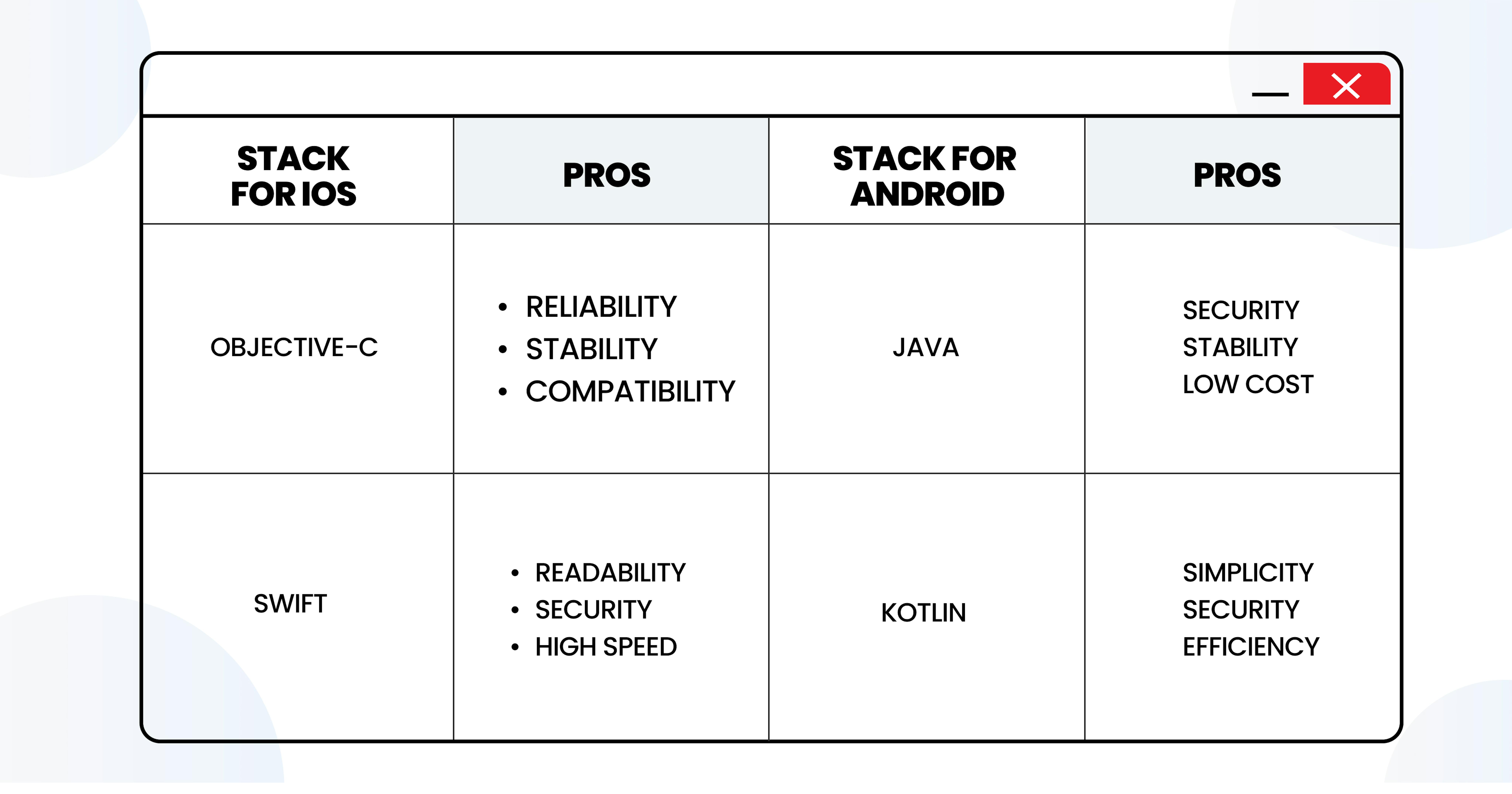
So, what's the cost?
There is a range of factors that impact the cost and timeline estimations for a banking app. It's necessary to consider these factors well in advance, that is before you send out a request for proposal (RFP) to your potential vendors. Here's what the final cost of a banking app depends on:
✔ Feature set, namely, functionality or what a banking app is capable of
✔ Technology stack, specifically, what tools, platforms, and technologies are used to build the app
✔ App design, or UX/UI design of the app
✔ Development team, that is, the level of expertise, location, hourly rate, number of developers as well as the type of cooperation
✔ BaaS integration, that is, integrating the app with the existing API and BaaS infrastructure
✔ Maintenance and support, which might be required after the app's release
Once you determined the feature set for your future banking app, you need to know how long it will take to implement each of the features, in other words, get a timeline estimate.
To make things clearer and showcase how the timeline for such projects is assessed, let's look at a real-life example from our personal experience with fintech application development. Here's some background information on the project.
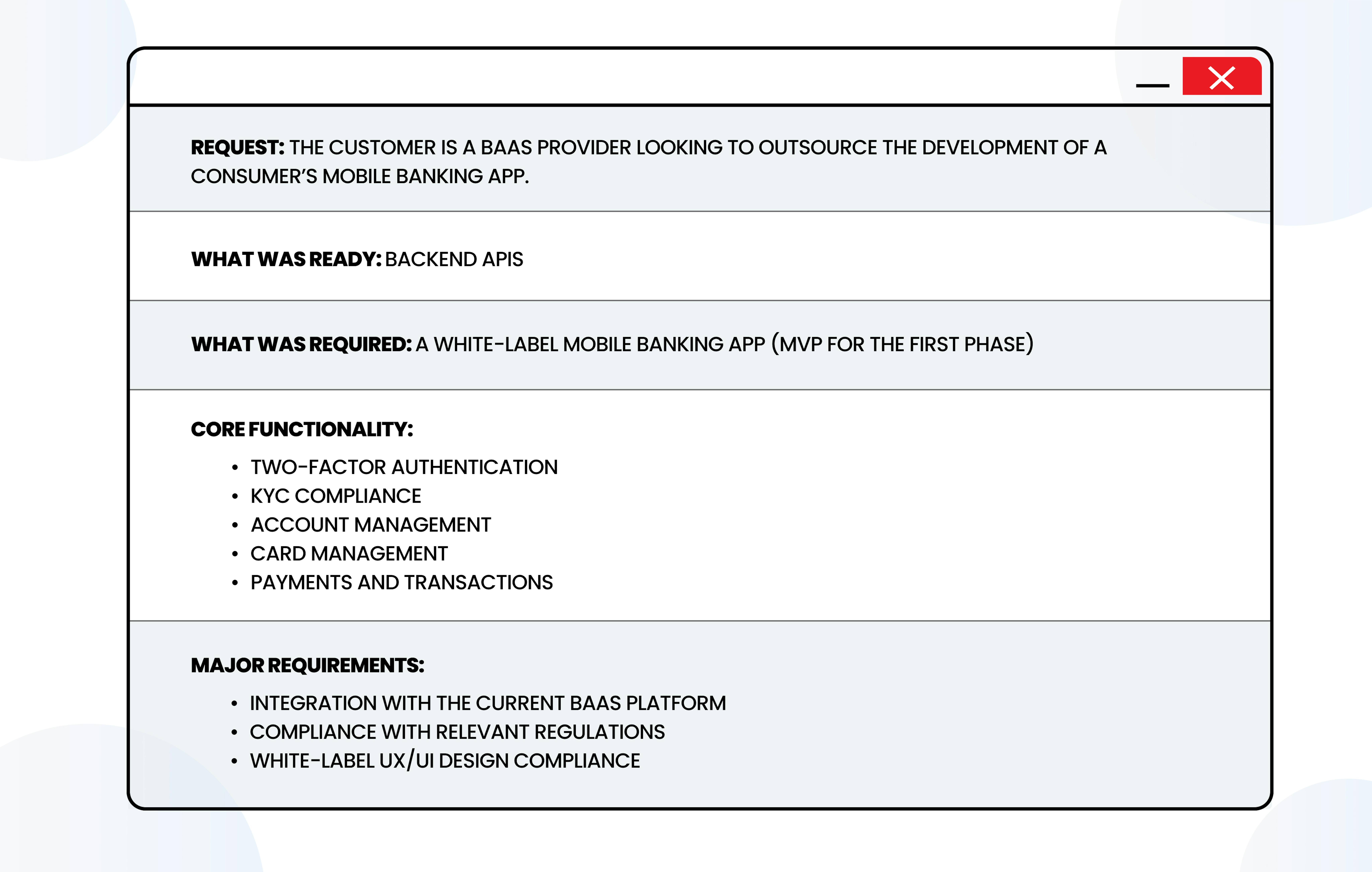
After studying the project requirements, we set up a meeting with the customer to clear up the remaining questions. Then we held an internal discussion to distribute roles and responsibilities and map out a development strategy. Finally, we prepared a timeline estimation. Here's how it looked like in terms of tasks and time required for their implementation.
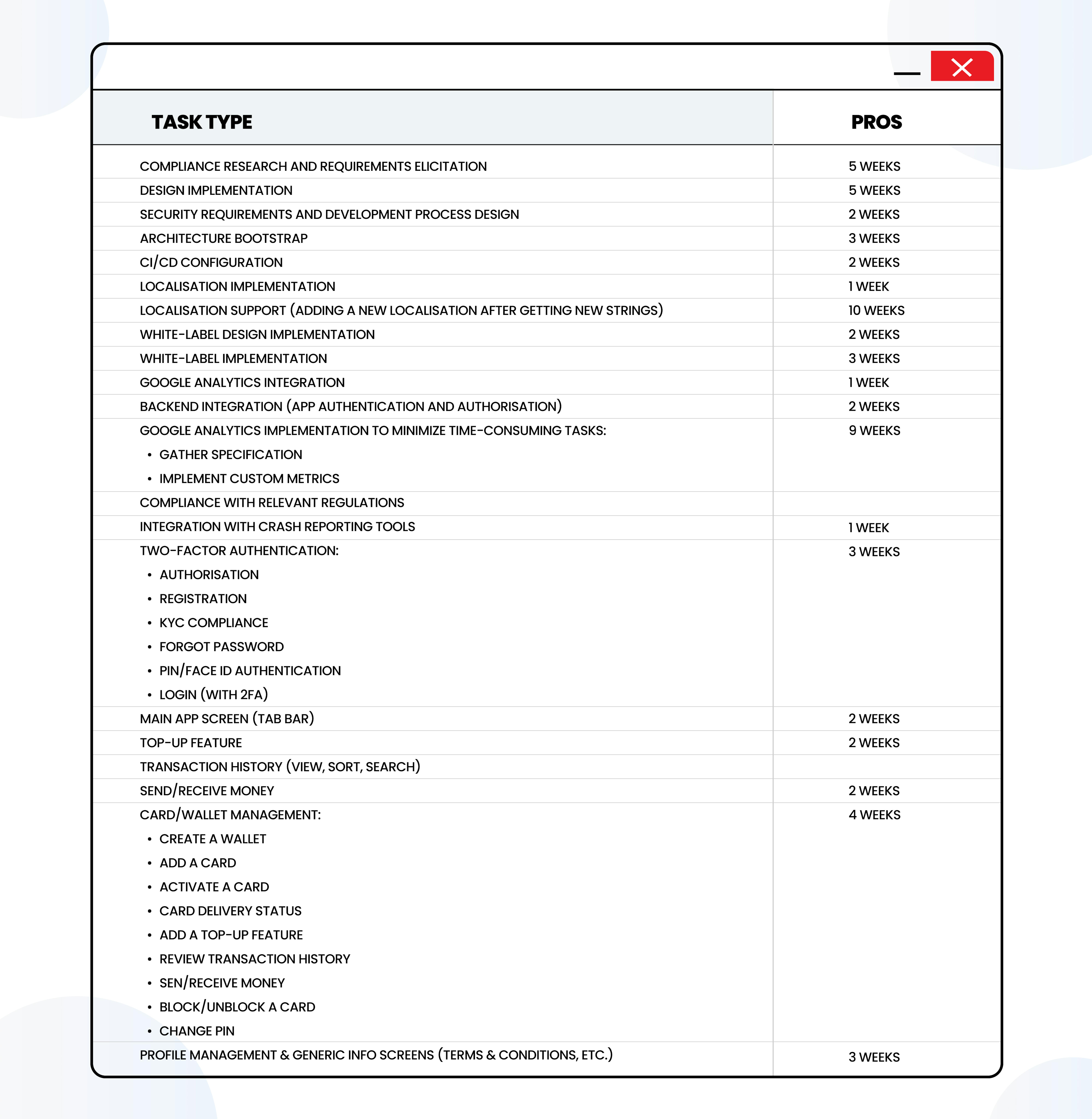
According to our estimations, all in all, the development of an MVP of a mobile banking app with the above characteristics would take 14 weeks, including 5 weeks for the research stage (considering that some tasks could be performed in parallel). The project deliverables would contain technical specifications and documentation of the app, including architecture and interfacing details with the BaaS platform. Creating such as app would take a team comprising:
- Senior and middle iOS developers
- Senior and middle Android developers
- Project manager
- UI/UX designer
This is just an example of a banking app estimation that would largely depend on the app's functionality, the technology used as well as some other factors.
Summing up
Convenience is a sign of the times and this is what makes online banking so attractive. Thus, using a mobile banking app saves plenty of time and effort, which is something people will always strive for.
Nowadays, you don't need to obtain a license to create your own banking solution—even a small fintech startup or a non-financial company can launch a product or service based on a Banking as a Service or BaaS platform.

